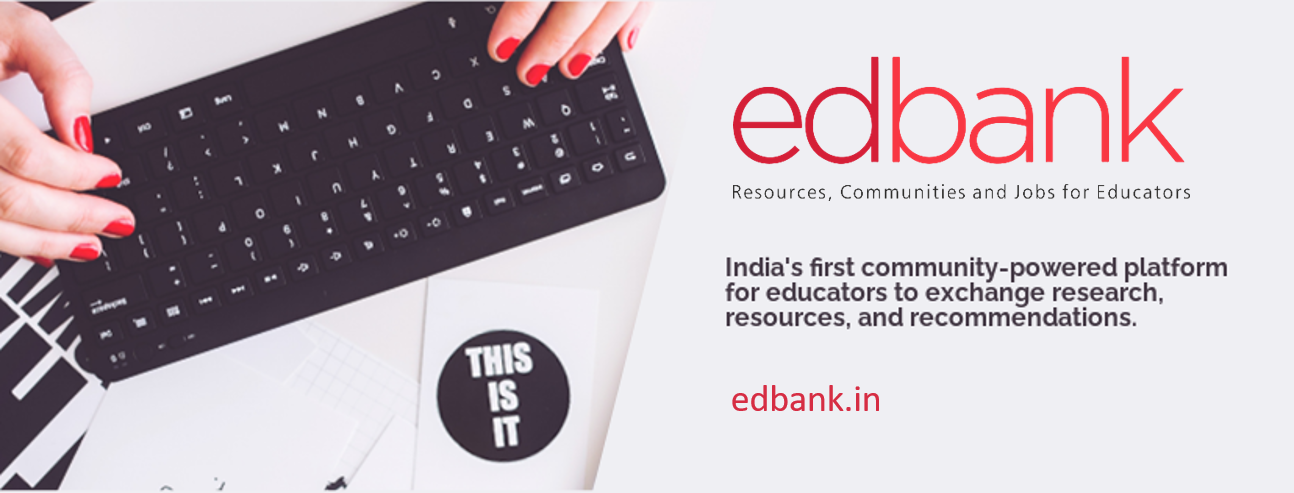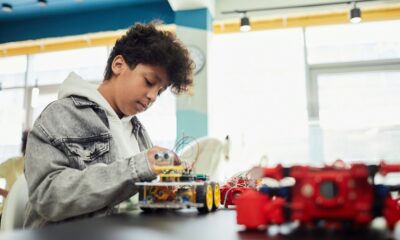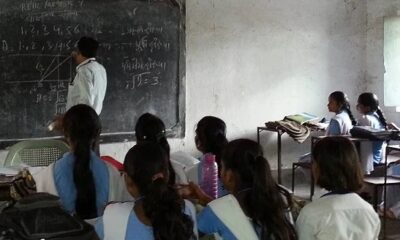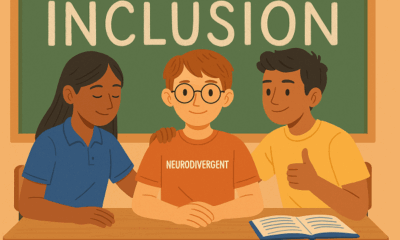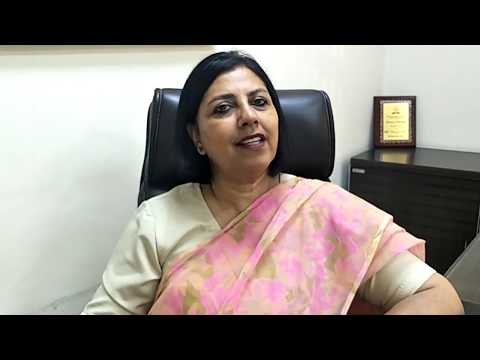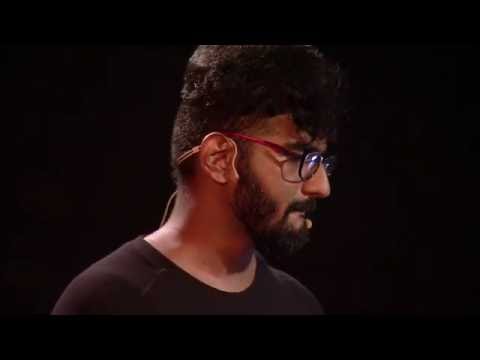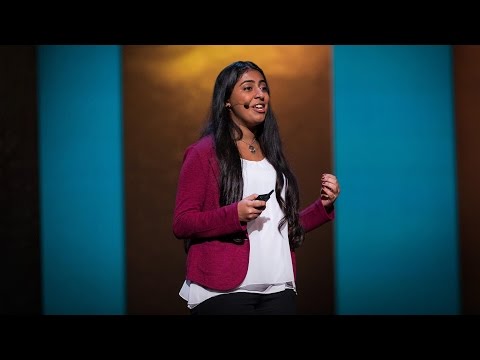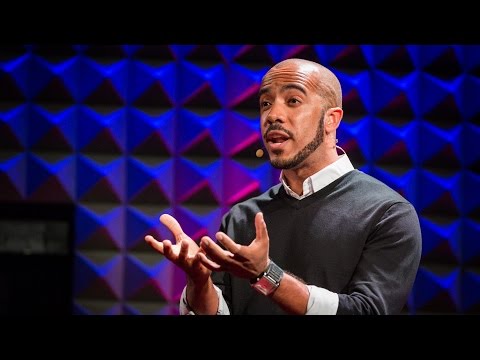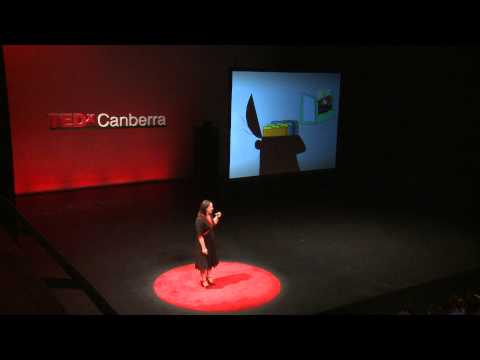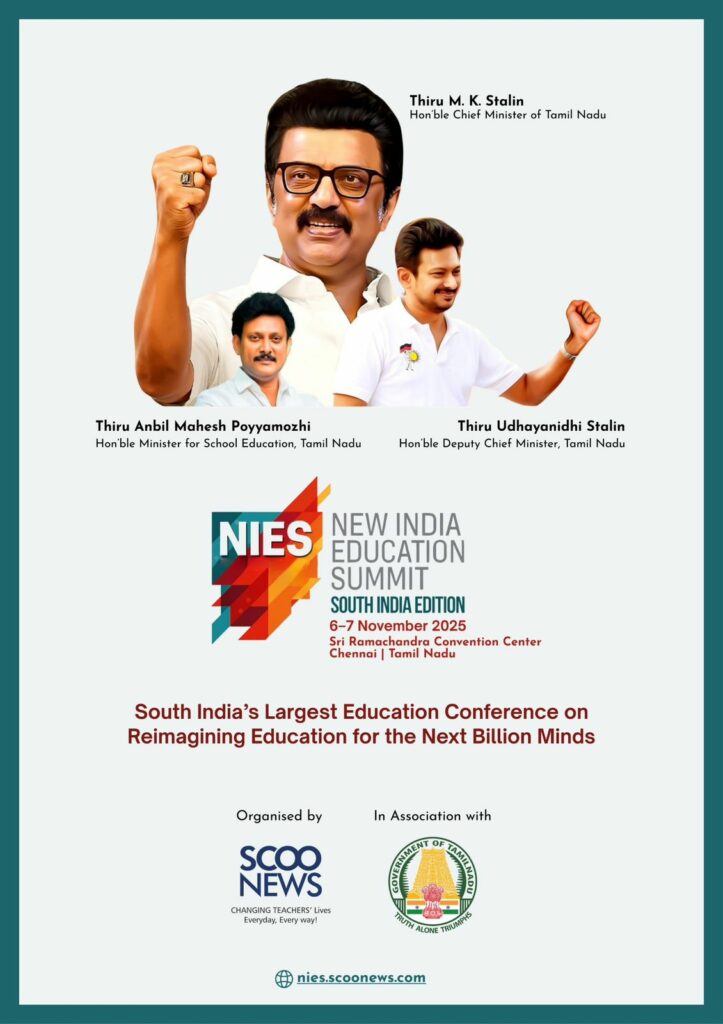Education
Are we raising a generation of narcissists?
Swati Sarawagi delves on an important question – are we raising a generation of narcissists?
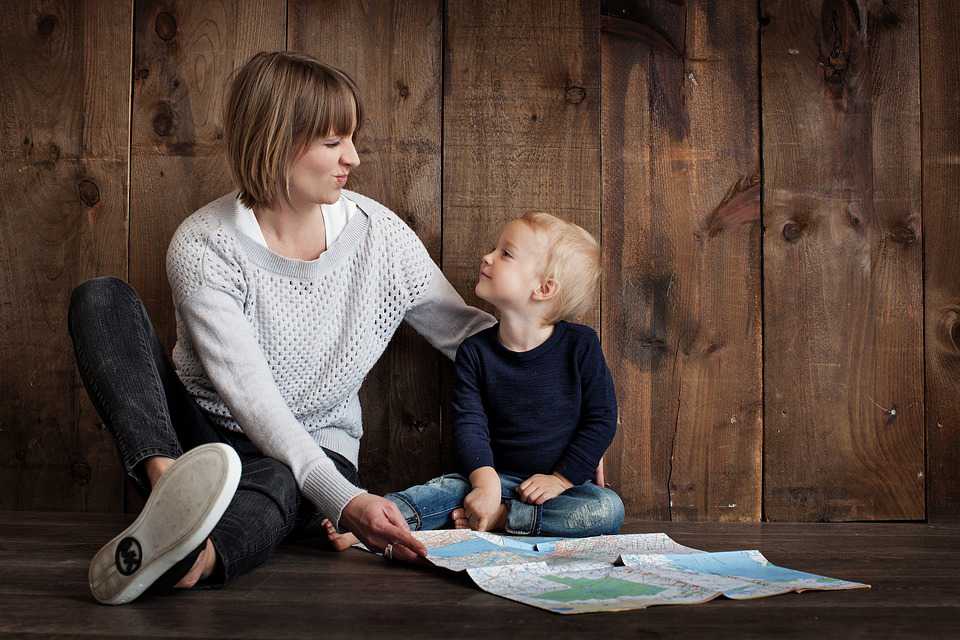
In the Facebook world, one expects friends to clap for every cup of coffee, coup and cuddle.
In the real world too, are we raising children addicted to praise for their self-esteem?
A parent is a child’s first and foremost cheerleader! Children need to hear their parents’ encouragement that gives him confidence. Praise is social conditioning that will help steer the child in the chosen direction. Praise is an important tool for moulding the child’s habits
We all know praise is addictive. Let it not become counter-productive!
A baby is born with a natural instinct to explore. He is highly motivated when his actions produce results. He doesn’t need praise for crying when he is hungry – the food he receives is reward enough. A baby understands that his actions are producing a result on somebody (when I cry, papa picks me up) or something (when I press this button, the toy lights up). He feels capable of trying new experiences. He does not need praise; his reward is in the sheer delight of producing result.
Most of us grew up in a time when our parents were strict and too much praise was considered superfluous. Can you imagine yourself being praised for tying your shoelaces? It was expected of you and you did it. And you went on with life without assuming that what you had done needed a mention.
A parent now, you are constantly trying to find a balance – even in something like praising your child. How much is too much?
Rewards need to be earned and they should be given sparingly to have value. The culture of a participation certificate takes away from the effort component.
What can parents do to encourage children to take risks and grow without the fear of being judged and without the need to be celebrated for every small feat?
LET YOUR CHILD BE SELF-MOTIVATED
Intrinsic motivation happens when a child feels pleasure and pride in what he has accomplished. External token rewards (praise, stickers, gifts) are then not required. He feels good about himself and enjoys challenges.
Rewarding children for every minor achievement, on the other hand, diminishes the joy for its own sake. Let the outcome be the reward in itself.
TIMING IS IMPORTANT
Praise in the middle of the task might throw him off task and make him lose interest in completing it. Instead, a warm smile or a back rub will also convey to your child that you appreciate what he is doing.
ACTIVITIES SHOULD BE DEVELOPMENTALLY AND AGE APPROPRIATE
Experiences should be neither too hard nor too easy. Too easy and he becomes bored. Too challenging and he will lose interest and become disheartened. He may not be motivated to try if he doesn’t think he can do it. Mastery through his own effort will keep him motivated. Our aim is to not use praise as validation. The child should develop the self-confidence of being right. Putting kids on a pedestal for completing a most mundane task hampers the child’s selfconfidence as he feels that the very least is expected from him. He feels belittled – that is all that he must be worth. His activities must challenge him to meet realistic attainable standards.
ENCOURAGE A GROWTH MINDSET THAT IS WILLING TO ASK QUESTIONS, TRY NEW THINGS AND LOOK DUMB!
If we praise the child for being “smart”- he may be scared to ask a “dumb” question – to let his peers know that he is not as smart as the teacher thinks him to be. He also begins to feel he needs to do things perfectly in order to get someone’s approval. He then avoids activities that are beyond his comfort zone and becomes risk aversive. Do we want him to become scared of not knowing all the answers and stick to only the conventional path?
A child should, instead, be praised for trying.
And a final word of caution – praise should not compensate for failure or it comes across as pity. “You did your best” will also convey to the child that he has a fixed ability that cannot be improved (he has already done his best!). Focus rather on the effort and tell him which areas he can improve in. He will appreciate that a lot more. Replace “Try harder” with “The runs were outstanding but be careful about the catches you gave away.” This information helps him to understand which areas to focus on.
You must praise your child otherwise he won’t be inspired to put in his best. He might even think you don't care. Our aim is to make him not dependent on it.
Keep it simple.
Let him truly deserve the praise.
Effective praise serves to motivate and increase a child’s levels of confidence. So how do we encourage him to stretch himselfto extend beyond their current comfort zone?
Harmful praise – Judges/ labels children- “You are a smart girl for finishing this puzzle” implies stupidity for an unsolved problem. Effective praise – Acknowledges the child- “I can see that you enjoy puzzles a lot.”
Hp – Is general – “Good boy” Ep – Is specific- “You have kept your toys away” is a far better acknowledgement that is likely to produce the desired action again (hopefully).
Hp – Compare a child to another. This indicates that competition, not mastery is the goal- “If Sai can do it, why can’t you?” Ep – Compare the child to his own past performance- “Last time you struggled with the concept- this time it was easier. Did you practise at home?”
Hp – Praising the outcome- “You ate an apple – here’s a star for you” Ep – Linking the activity to the pleasure experienced- “Wasn’t the apple crunchy and juicy? And your body will thank you for making it so strong!”
Hp – Belittling the child’s success – “You finished the task because you took extra time.” Ep – Linking the effort to the success- “You could do this because you thought long and hard about the problem and remembered the steps.”
Hp – Compliment involves you- “I am so proud of your run today.” Ep – Compliment centers around the child I’m sure you are proud of yourself.”
Hp – Focuses on the outcome- “You got 10 out of 10! Superb” Ep – Focuses on the effort and the strategies used by the child- “You got all correct and I can see that you are improving your handwriting too.”
Hp – Bragging in public puts pressure on the child to perform. (It also annoys your guests.) “Baby, show him the dance you just learnt.” Ep – Celebrate your child’s achievements with comfort people. He himself will join in to demonstrate his newly acquired skill – “Show Baba the dance you were practicing.”
Hp – Exaggerating – Children sense insincere praise as quickly as adults. When a dive is executed awkwardly despite a lot of effort, there is no point in saying – “Beautiful dive!” Ep – Being truthful- By not defining the outcome as good or bad, the child does not feel judged and yet knows she has your attention- “You were focused and the effort was evident. You are getting better with every dive. ”
Hp – Praise for error free success or low challenge activity- “You did it so fast! So cool.” Ep – When the child has already displayed mastery over something previously- “I’m sorry I wasted your time with something so easy. Let’s try something hard- something you can learn from.”
Hp – When the outcome is not great- “This painting looks amazing.” Ep – Communication is very satisfying to a child -Have a conversation to show your interest- “Hmm- you used orange to depict the sky. Is that for a reason?”
Hp – Praise him for being smart- indicating that intelligence is fixed- “You are smart for solving this problem so fast.” Ep – Praise the capability for learning – indicating that intelligence can be nurtured- “You applied the concepts taught to you correctly. That was smart of you.”
Hp – Diluting the praise “Who would have thought you could complete your meal in less than an hour?” Sarcasm is likely to do more harm than good. Pointing out past failures is really a way of criticising your child. Ep – Praise should be sincere or it loses its power. And it should focus on the present achievement of the child. “You are growing to be an independent boy as you can now finish your meal in less than an hour.”
Education
How to Build Better Parent-Teacher Communication

Good communication between parents and teachers plays an important role in a child’s learning and confidence. When both stay connected, it helps students feel encouraged and understood. Still, it’s not always easy to keep that connection strong. Busy schedules and small misunderstandings can make things tricky. The good news is that a few simple habits can make a real difference. Let’s examine what parent-teacher communication truly entails and how both parties can collaborate more effectively.
What is Teacher and Parent Communication?
Teacher and parent communication is all about staying connected and working together for a child’s growth. It’s not just a one-time meeting or message but a continuous, two-way exchange of updates, ideas, and feedback. When teachers and families stay in touch regularly, it creates a strong support system that helps students do better both in and outside the classroom.
In simple terms, teachers share what’s happening at school, like:
- Homework and assignments
- Grades and test results
- Class activities and behavior updates
- Social and emotional progress
- Strengths and areas where a student might need extra help
At the same time, parents share what’s happening at home, such as:
- How the child feels about schoolwork
- Any challenges or changes they’ve noticed
- Questions or suggestions about learning support
When both sides keep the communication open, it builds trust and teamwork. Teachers understand students better, and parents feel more involved in their child’s education.
Tips for Smooth Parent-Teacher Communication
Talking to parents doesn’t have to feel formal or uncomfortable. In fact, the better your connection with them, the smoother your teaching journey becomes. Whether you’re reaching out for the first time or trying to keep the conversation going, here are some real-world ways to build trust and keep communication easy, clear, and helpful.
1. Begin with a Friendly Introduction
Right at the beginning of the academic year, take a moment to introduce yourself to parents. You can send a friendly email, a printed note, or even a short video message. Let them know who you are, what you’re excited about, and how they can reach you. This early step breaks the ice and helps parents feel welcome and included in their child’s learning journey. When you set a positive tone early, it makes future communication easier and more comfortable for everyone.
2. Communicate Often, Not Just When There’s a Problem
Don’t let communication only happen during parent-teacher conferences or when something goes wrong. Send regular updates about what’s happening in class, upcoming events, or even small successes their child has had during the week. These don’t need to be long messages. A quick note about a student’s progress or behavior can make a parent’s day and help build trust over time. It also shows that you’re not just reaching out when there’s a problem.
3. Invite Their Voice, Too
Sometimes we forget that parents know their child better than anyone else. Ask questions. How does their child learn best at home? Are there any routines or challenges you should know about? And when they speak, listen fully. These conversations often reveal things that can shape how you teach and connect with the student.
4. Be Available and Approachable
Parents need to know that they can come to you when something is on their mind. That doesn’t mean being available 24/7, but it does mean creating space for honest conversations. You can let them know about your preferred times for calls or meetings, and also offer virtual options if in-person isn’t possible. Make sure the tone of your communication is always warm and non-judgmental so they feel safe speaking up.
5. Treat Parents as Team Members, Not Outsiders
Instead of just delivering information, try to involve parents as partners in their child’s learning. Share ideas for how they can help at home, ask for their observations, and thank them for their efforts. If there’s a behaviour issue or academic challenge, work with them on solutions instead of just reporting the problem. A strong home-school partnership creates a consistent support system for the student, both inside and outside the classroom.
6. Show Cultural Awareness and Respect
Families come from many different backgrounds, and their expectations may vary. Take the time to learn about their culture, language preferences, and family structure. Avoid making assumptions or using language that might feel exclusive. If needed, provide translations or simplify your communication to make sure everyone understands. This small effort shows parents that you value who they are and where they come from.
7. Share Progress in a Way That’s Clear and Supportive
Progress updates should be balanced. Yes, it’s important to point out what’s not working, but don’t forget to highlight what is. Give specific examples instead of vague praise or criticism. Say things like, “I’ve noticed Priya really lights up during science experiments,” or “Rohan is still working on staying focused during group tasks.” This kind of feedback feels personal and helps parents understand the full picture.
8. Choose the Right Tools for the Right Message
Too many apps or tools can overwhelm parents quickly. Choose one or two that you’ll stick to, whether it’s a school app, WhatsApp group, or weekly email. Use them for quick updates, reminders, or sharing student wins. Keep your tone casual but clear. Tech is helpful only when it makes life easier for both sides.
9. Respect Their Time and Yours
Teachers and parents are both juggling busy schedules. Respecting each other’s time helps keep communication productive and stress-free. If you’re scheduling meetings, offer time slots that work for working parents, too. Keep conversations focused so that meetings don’t run longer than necessary. Also, set clear boundaries about when you’re available.
When Is Parent-Teacher Communication Most Important?
Parent-teacher communication matters most right at the start of preschool. That first day of preschool is a big moment for every child and their family. When teachers and parents talk openly from day one, it helps everyone feel more comfortable and sets up a strong partnership for the rest of the year.
Why It Matters on Day One
- The first day of preschool often brings a mix of excitement and nervousness for both kids and parents. Honest communication helps everyone feel a little more comfortable.
- Open communication lets teachers learn about each child’s background, interests, and any worries or comforts. This way, teachers can give more personalized care and support from the beginning.
- Early conversations help build a sense of trust between home and school, making the classroom feel like a safe and welcoming place for the child.
- When teachers share classroom routines and expectations with parents on the first day, it helps families get ready and feel involved in their child’s new experience.
- These early talks also give teachers helpful details, like which languages are spoken at home, special family traditions, or any recent changes in the child’s life. This helps teachers communicate better and offer the right kind of support.
By making communication a priority from the very first day, both teachers and parents can work together to help each child settle in smoothly and feel confident as they start their schooling journey. Building strong parent-teacher teamwork not only supports a child’s emotional well-being but also lays the foundation for long-term academic success.
Closing Thoughts
We hope these tips help make your conversations with parents smoother and more meaningful. Building that connection takes time, but small efforts can lead to strong partnerships.
This article is authored by-
Chitra Khanna,
Content Strategist,
KLAY Preschools & Daycare
Education
Beyond the Syllabus: School Teachers’ Insights on Project-Based Learning

How classroom experiences are being reshaped through projects, inquiry, and authentic learning
As the classroom grows beyond the boundaries of textbooks and blackboards, so too does the role of the teacher, and the very meaning of learning. Project-Based Learning (PBL), once considered a niche innovation, is increasingly being embraced by educators across schools in India. But what happens when PBL moves from theory to practice?
To answer this, we turned to the people at the heart of the learning experience: teachers.
In conversations with educators from diverse school contexts, one theme was clear: PBL is not just a teaching strategy; it’s a transformation in how students learn, engage, and grow.
From Worksheets to Real-World Work: How PBL Differs from Traditional Homework
One of the clearest contrasts teachers observed was how PBL moves learning from repetition to relevance. Traditional homework often reinforces information through rote exercises. PBL, by contrast, asks students to apply their knowledge to solve problems, create products, or investigate issues that matter to them.
One teacher shared how using PBL to raise student awareness about water pollution was a hit in the class. Instead of just assigning problems, the students were made to create awareness posters, conduct surveys in their neighbourhood, and suggest solutions through group presentations. The teacher also noted how the students took the lead, and had an ownership over this project that they usually don’t showcase.
The shift from repetition to application fosters deeper engagement. Several teachers noted that students who previously struggled to stay motivated with homework showed renewed interest when asked to take on real-world challenges.
Changing Roles: Teachers as Facilitators, Not Just Instructors
Project-Based Learning also changes the role of the teacher, who went from being the sole source of knowledge to a guide who supports inquiry and exploration.
One common change teachers noticed was on how they had to let go of control in the classroom. Naturally, the students now had to work on projects on their own, and could only come to the teacher for guidance and help. The teachers noted that they helped their students ask the right questions, find credible sources, and evaluate their work, instead of completely placing the burden of learning on the teacher themselves.
This change isn’t always easy. It requires a shift in mindset and in many cases, rethinking how time is used in class. But most teachers agree: the shift is worth it. PBL has encouraged interdisciplinary approaches, made space for collaborative learning, and created more meaningful student-teacher interactions.
Unlocking Student Potential: What PBL Offers Beyond Academics
Academic performance remains important, but a lot of teachers repeatedly pointed out that PBL nurtures a broader set of skills, like critical thinking, collaboration, communication, and creativity. One teacher particularly noted on how their quietest students became ‘leaders’, and became outspoken when it came to presenting their ideas and projects. While not directly, PBL helped these students find their voices, and find confidence in their effort and abilities.
Students learn to manage time, negotiate roles, and solve problems, skills that aren’t always reflected in exam scores but are vital for life beyond school. For many teachers, the most rewarding aspect of PBL was watching students take initiative, work through failure, and reflect on their learning.
Widening the Circle: Strategies for Scaling PBL in More Classrooms
While the benefits are clear, teachers acknowledged that implementing PBL at a large scale comes with challenges, like limited time, rigid curriculum structures, and unfamiliarity among teachers.
They offered a few practical suggestions for schools and educators considering wider adoption:
- Start Small and Build Confidence: Starting with short projects aligned to the unit you are already teaching introduces PBL in an easy manner. This way, teachers do not have to worry about overhauling their curriculum, or for making huge changes to their current teaching methods.
- Encourage Collaboration Among Teachers: Joint planning across subjects makes projects richer and more integrated. This also promotes interdisciplinary skills among students, and allows them to craft solutions using different subjects and skillsets.
- Make Time for Reflection: Embedding opportunities for students to present, critique, and reflect helps solidify learning. By reflecting on their projects and mistakes, they can understand how they can improve their approach to PBL.
- Support Professional Development: Teachers emphasized the need for ongoing training, not just one-off workshops but long-term spaces for peer sharing and mentorship. This continuous development would cement and solidify the methods and outcomes that will maximise using PBL for student benefits
Looking Ahead: Redefining Success in Education
PBL challenges traditional ideas of what learning looks like. It pushes students to move beyond memorization, and it challenges teachers to rethink their methods. But more than anything, it opens up the classroom to ideas, to communities, and to possibilities. No longer are students just preparing for exams, but also for the complex world outside school.
As educators continue to navigate the changing landscape of education, the insights from teachers point us toward a hopeful future, where learning is meaningful, relevant, and rooted in real-world experience.
This article is authored by Mrs. Padmashini M Patro, Principal, Air Force School Bamrauli
Education
Over 1 Lakh Single-Teacher Schools Educate 33 Lakh Students Across India: MoE Data
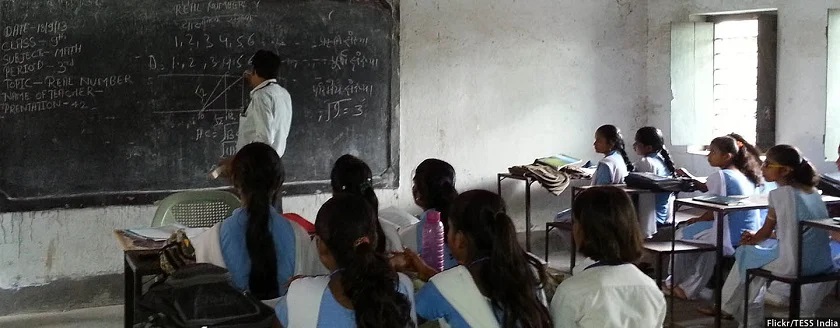
Education
Over 3 Lakh Schools Join Hands for India’s Largest-Ever Innovation Challenge: Viksit Bharat Buildathon 2025
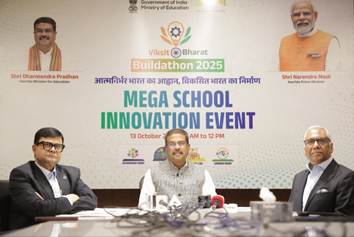
In a historic moment for Indian education, more than 3 lakh schools across the country came together to participate in the Viksit Bharat Buildathon (VBB) 2025, the largest live school innovation challenge ever organised in India. The nationwide event was inaugurated in New Delhi by Union Education Minister Dharmendra Pradhan, marking a significant milestone in the Government’s efforts to embed creativity, innovation, and problem-solving into the school ecosystem.
The Viksit Bharat Buildathon, organised by the Department of School Education & Literacy (DoSEL) in collaboration with Atal Innovation Mission (AIM), NITI Aayog, and AICTE, saw over one crore students from Classes 6 to 12 working simultaneously during a 120-minute live innovation session. Students teamed up in groups of three to five to design prototypes and propose solutions under four themes — Atmanirbhar Bharat, Swadeshi, Vocal for Local, and Samriddhi.
While inaugurating the event, Minister Pradhan interacted virtually with students of PM SHRI Government High School, Khorda, Odisha, and later visited Delhi Public School, Mathura Road, and Kendriya Vidyalaya No. 2, Delhi Cantt. Commending students for their creativity, he said, “The vision of Viksit Bharat will be realised through the innovative spirit of our young learners. These ideas will not only address domestic challenges but also create global models for change.”
The event drew widespread participation, with Uttar Pradesh leading the numbers (78,206 schools), followed by Maharashtra (41,198), Gujarat (20,017), and Madhya Pradesh (18,129). Other states like Tamil Nadu (16,370), Bihar (15,732), Odisha (12,344), and Haryana (11,567) also recorded impressive engagement, showing the growing momentum for grassroots innovation across regions. Even smaller territories like Ladakh (358), Puducherry (149), and Andaman & Nicobar Islands (171) participated actively, reflecting the nationwide reach of the initiative.
According to Sanjay Kumar, Secretary, DoSEL, this unprecedented participation signals a transformation in how Indian students approach learning. “This one-of-a-kind movement strengthens innovative thinking and enhances the problem-solving capabilities of students across India,” he said. Deepak Bagla, Mission Director of AIM, called the initiative a “mass movement connecting schools in remote villages with those in metropolitan cities through innovation.”
A New Chapter for Indian Education
The Viksit Bharat Buildathon signifies more than just a hackathon — it reflects a systemic shift in Indian education towards experiential and innovation-led learning. As schools across the country engage in design thinking, tinkering, and collaboration, students are being equipped not just with knowledge, but with the mindset and skills needed to build a self-reliant India.
By nurturing creativity from an early age and fostering partnerships between schools, government bodies, and industry, the Buildathon is shaping a generation ready to contribute to the vision of Viksit Bharat 2047 — a developed, empowered, and innovation-driven India.
Education
17-year-old Innovator Designs Learning Tools for the Visually Impaired

At just 17, Singapore-based student Ameya Meattle is proving that age is no barrier to impact. What began as a small idea to make education more accessible has evolved into a mission that is transforming how visually impaired learners experience learning and skill development.
Ameya founded Earth First at the age of 14 — a social enterprise that helps visually impaired individuals “earn and learn” by creating sustainable, eco-friendly products. Working with eight NGOs across India and Singapore, the initiative has trained more than 100 visually impaired students and launched over 23 sustainable product lines, from tote bags and jute placemats to macramé planters. Each design is adapted to provide hands-on learning opportunities and help trainees gain confidence in both craft and enterprise.
Beyond social entrepreneurship, Ameya has focused deeply on education and technology. He led a Python programming course for 50 visually impaired students, designing custom training modules that made coding accessible through screen readers and tactile tools. By introducing technology as a viable career pathway, Ameya hopes to help students move from manual tasks to high-skill, digital opportunities.
His work also extends into assistive technology research. Under the mentorship of Dr. Pawan Sinha at MIT, Ameya developed a VR-based diagnostic game to assess visual acuity in children — turning the process into an interactive experience rather than a clinical test. The tool is being piloted at MIT’s Sinha Lab and with Project Prakash in India, helping doctors evaluate and track visual development before and after eye surgeries.
In addition, during his internship at the Assistech Lab at IIT Delhi, Ameya worked on designing tactile STEM teaching aids, such as accessible periodic tables and coding tutorials for visually impaired learners. His goal, he says, is not just to innovate but to make scientific learning inclusive and joyful for all.
Ameya’s work highlights how education, empathy, and innovation can intersect to create a more equitable future — one where technology serves not just progress, but people.
Education
Empowering Young People to Champion Neuro-Inclusion
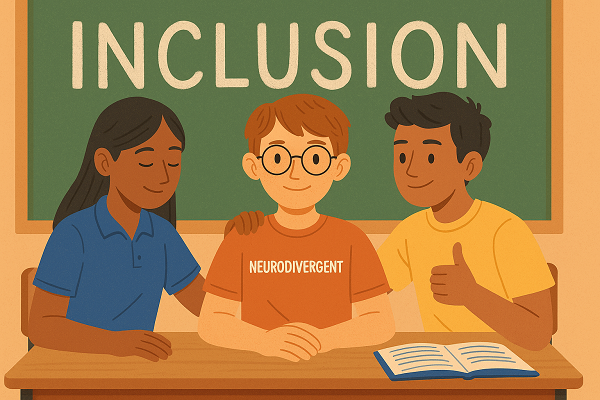
Aamir Khan’s recent film Sitaare Zameen Par has brought neurodiversity into the mainstream, and sparked important conversations about inclusion and rethinking what we consider ‘normal’. These cultural moments help raise awareness, but they also remind us that there is still a long way to go in making inclusion a lived reality.
It is estimated that 1 in 8 children in India have a neurodevelopmental condition such as ADHD, autism, learning disabilities and intellectual disability. Many of these children often face social isolation, bullying and exclusion – often the earliest of these experiences begin during school.
At the same time, today’s young people indeed carry with them a deep sense of social justice and openness to diversity. The energy, empathy and bold creativity of young people can be harnessed – if nurtured in the right way, at the right time – to make them equal partners in cultivating inclusive cultures in schools and communities.
We need young allies – people who are not only informed, but who engage meaningfully with neurodivergent peers, actively support the cause, and drive inclusivity. The key lies in equipping them with the knowledge, skills, and ultimately the mindset needed for inclusion. Schools must invest in nurturing young allies who can champion neurodiversity and take ownership of inclusion in spaces they belong to.
Our experience and work on youth allyship has shaped our understanding of what it takes to make this happen. Here are some of our most important insights:
- From awareness to active allyship: We need to move beyond awareness about neurodiversity, by equipping students with the knowledge, skills, confidence, and opportunities to take meaningful action as allies for neuro-inclusion.
- A personalised journey: Allyship is a lifelong journey which is most authentic when it grows organically from curiosity, dialogue, self-initiative and experiences. It cannot be imposed, and must be led by the individual.
- Student autonomy: When students have the autonomy to choose how they contribute, their commitment deepens. We should give students a mix of structure and freedom to help – guidance to shape their efforts, alongside the space to decide how they want to step up for meaningful change.
So how can schools nurture students as young allies?
- Create safe, relatable spaces led by students, for students Peer-led conversations give students space to reflect on diversity, challenge stereotypes, and share personal experiences. When peers lead, the power dynamics shift – students listen more openly, express without fear of judgment, and begin to see inclusion as something that belongs to them, not just a directive from authority figures. Our Inclusive Duniya Circles are one example of such spaces. Students are primed and empowered to sensitively facilitate conversations about disability, neurodiversity and inclusion.
- Explore connections to students’ interests and strengths
Students should be given the opportunity to discover how they feel about the cause and how they want to contribute. At the end of each Circle, we often ask, “How do you want to step up for an Inclusive Duniya?” The answers vary, but what matters most is that the initiative comes from the students themselves. Our role as adults and educators is to support them in making it happen.
Some take the route of advocacy – sparking conversations and campaigning for the cause with schoolmates. Others channel creativity through music, art, or theatre that challenges stereotypes.
For instance, the song Inclusive Duniya (available on Spotify), was written, composed and produced by students on their own from carefully crafting lyrics which invited listeners to imagine a world where everyone feels like they belong to picking melodies that convey warmth. Students used their creative talents to make a gentle but compelling call to action for allyship. Helping students tap into their personal strengths and interests enables authentic engagement and contribution to the cause.
- Embed into academic and co-curricular pathways
Linking students’ inclusion initiatives and projects to existing academic opportunities, such as CAS projects in the IB curriculum, allows them to merge personal passion with academic commitment. Framing these initiatives as co-curricular activities also strengthens students’ profiles for college applications. This dual recognition provides a formal recognition to their efforts and ensures students’ efforts are sustained – adding motivation, depth and commitment to their efforts.
The voices of young people not only impact their peers, but also have a ripple effect in shaping how families talk about disabilities, and, in due course, how communities and workplaces open themselves up to inclusion.
With the right support, our young generation can become a driving force for an inclusive world. Schools, as microcosms of society, provide the most conducive space for young people to explore sensitive concepts, question biases, and practice inclusion in meaningful ways. By nurturing young allies who truly value and celebrate diverse ways of thinking and being, we can lay the foundation for a more Inclusive Duniya.
This article is co-authored by:

Pooja Sharma, Founder and CEO, Inclusive Duniya

Srushti Patel, Manager- Schools Programme, Inclusive Duniya
Education
Ministry of Education Urges Schools to Adopt UPI for Digital Fee Payments, Promoting Ease of Schooling
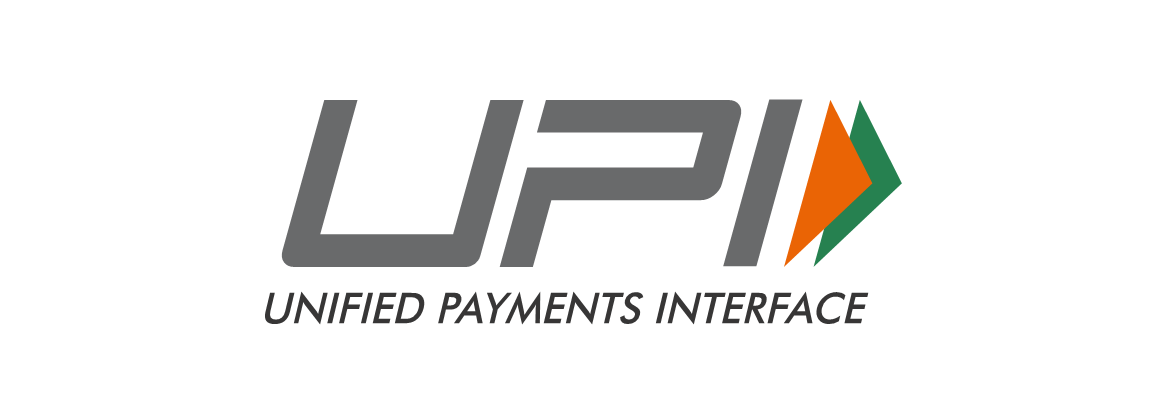
Education
Supreme Court Calls for Early Sex Education in Schools: “Not from Class IX, But from a Younger Age”
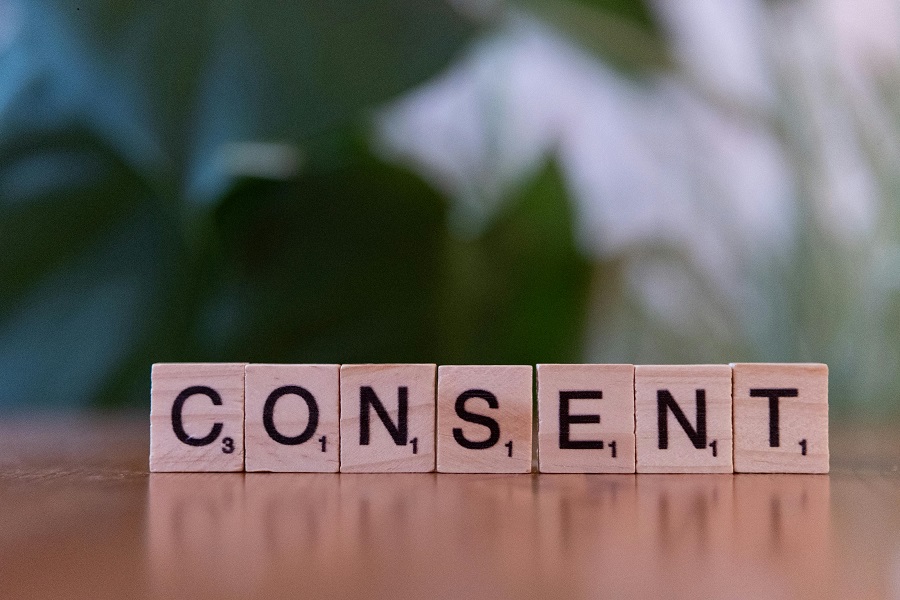
In a landmark observation, the Supreme Court of India has emphasised the urgent need to introduce sex education at a younger age, rather than waiting until Class IX as is the current norm. The apex court stated that children should be informed and sensitised about the physical and emotional changes that accompany puberty — and taught the necessary care and caution that come with it.
The observation came from a Bench comprising Justice Sanjay Kumar and Justice Alok Aradhe, which noted that the absence of early sex education leaves children vulnerable to misinformation and misunderstanding during their formative years.
“Sex education should be provided to children from a younger age and not Class IX onwards. It is for the authorities concerned to apply their mind and take corrective measures so that children are informed of the changes that happen after puberty,” the court stated.
The Bench made the remarks while hearing an appeal filed by a 15-year-old boy, who had been denied bail by the Allahabad High Court in a case under Sections 376 and 506 of the Indian Penal Code (IPC) and Section 6 of the Protection of Children from Sexual Offences (POCSO) Act. Recognising that the accused was himself a minor, the Supreme Court had earlier granted him bail in September 2025.
In the same case, the Court had directed the Government of Uttar Pradesh to submit an affidavit explaining how sex education is currently implemented in schools. The state responded that sex education is introduced only in Classes IX to XII, following NCERT guidelines. However, the Bench expressed concern over this delayed introduction and urged policymakers to revisit the framework to ensure children receive age-appropriate education much earlier.
The Court set aside the High Court’s order and made the juvenile’s bail permanent until the completion of the trial. More importantly, its remarks have reignited the national debate on the need for comprehensive sexuality education in India, which many experts argue is crucial to preventing abuse, reducing stigma, and promoting healthy development among adolescents.
Education experts have long maintained that early, factual, and inclusive discussions about puberty, consent, and emotional health must begin before adolescence — ideally in primary school — to prepare children for real-world experiences and relationships. The Supreme Court’s observation is expected to prompt renewed policy discussions on revising the sex education curriculum nationwide.
Education
Delhi Government Launches Online First Aid Training Programme for Teachers
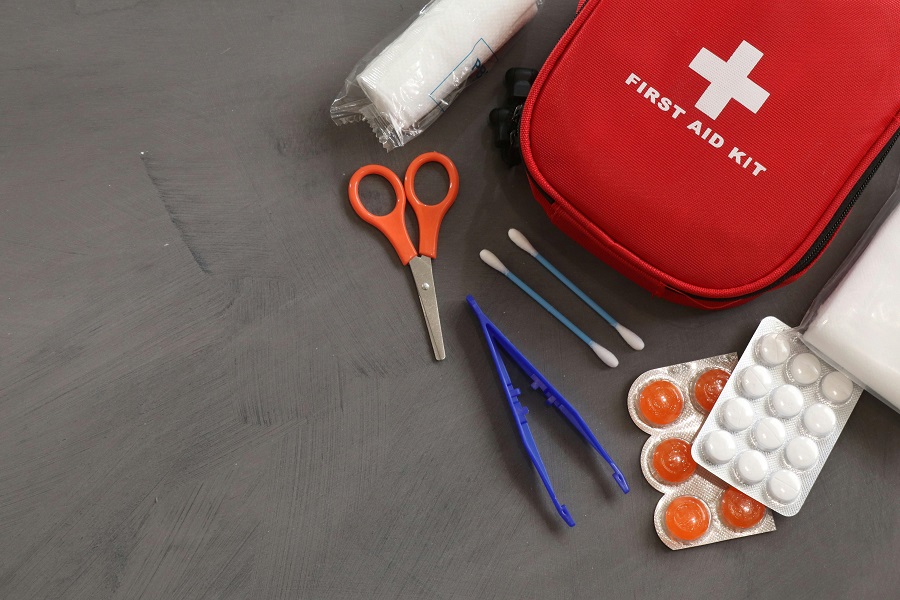
The Delhi government has introduced a new online training programme designed to equip teachers with essential first aid skills to respond effectively during health emergencies in schools.
According to a circular issued by the State Council of Educational Research and Training (SCERT), the course — titled “First Aid – To Improve Human Reaction in Challenging Health Situations” — will be conducted under the Massive Open Online Course (MOOC) format. The training is mandatory for all teachers and will run from October 9 to October 19, 2025.
The initiative aims to increase awareness about the importance of readiness in medical emergencies and the role of first aid in saving lives. It will also educate teachers on maintaining functional first aid kits in classrooms and demonstrate practical methods for administering care in real-life situations.
Teachers must achieve at least 70 per cent in each assessment to complete the course successfully. Upon completion, participants will receive certificates, which can be downloaded directly from the platform.
By introducing this online training, the Delhi government seeks to build a culture of preparedness and safety across schools. With thousands of teachers gaining basic emergency response skills, the initiative is expected to significantly improve the ability of schools to manage sudden health crises and ensure student well-being.
Education
Atal Innovation Mission and IFCCI Join Hands to Scale Up Atal Tinkering Labs Across India
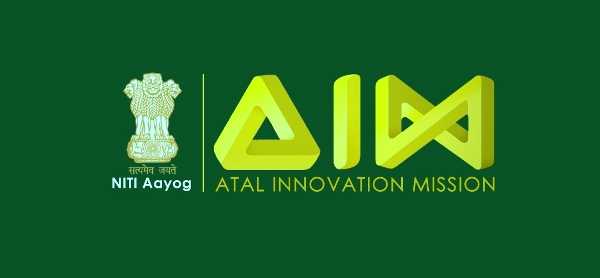
The Atal Innovation Mission (AIM), NITI Aayog, and the Indo-French Chamber of Commerce & Industry (IFCCI) have signed a Statement of Intent (SoI) to strengthen and expand the Atal Tinkering Labs (ATLs) network across India. The agreement, formalised at the French Embassy in New Delhi during IFCCI’s 3rd CSR Connect Day 2025, marks a significant step in fostering STEM education, digital literacy, and innovation among school students.
The event was attended by H.E. Thierry Mathou, Ambassador of France to India, who praised the partnership for deepening Indo-French collaboration in social development. He highlighted that 2026 will mark the India–France Year of Innovation, encouraging businesses from both nations to invest in sustainable, community-driven impact initiatives through Corporate Social Responsibility (CSR).
Through this partnership, IFCCI and AIM aim to mobilise CSR contributions from French and Indian companies to improve infrastructure, enhance hands-on learning experiences, and bridge the gap between industry and education. IFCCI, which has already executed over 86 CSR projects benefiting more than 15,000 people across India, will leverage its network to support ATL expansion, particularly in underserved schools.
Mission Director of AIM, Deepak Bagla, noted that over 11 million students have already benefitted from the ATL initiative, which he called “one of the world’s largest grassroots innovation programs.” He said, “From the northernmost village school to the southernmost, innovation is thriving everywhere. The real story lies not in the scale, but in the creativity of the ideas students are building.”
A Shared Vision for Inclusive Innovation
The collaboration aims to make innovation accessible to all students by promoting digital tools, teacher training, and student challenges that inspire curiosity and problem-solving. IFCCI Director General Payal S. Kanwar added, “This partnership is a step forward in empowering youth with 21st-century skills. We aim to bridge the gap between industry and education and make innovation accessible to every student, especially in underserved regions.”
However, as the Atal Tinkering Labs expand, addressing operational challenges remains crucial. Reports by UNICEF and The New Indian Express underscore that access to digital tools alone cannot guarantee innovation without inclusive design, mentorship, and ethical technology use. UNICEF’s SPARK Labs model, which links creativity with social change, offers a useful reference — encouraging schools to blend innovation with empathy, inclusion, and purpose.
Challenges and Areas for Improvement
Despite the ATL program’s remarkable reach, a 2023 assessment highlighted several gaps. Nearly 58% of ATL teachers lack a STEM background or structured training, resulting in inconsistent mentorship. In many schools, ATL sessions are not integrated into the timetable, limiting daily engagement. Moreover, less than 10% of schools report active student participation due to limited guidance and parental scepticism about its academic value.
Operational hurdles like irregular funding, defective equipment, and poor monitoring systems have also hindered consistent performance. Some schools struggle to maintain labs once initial grants are exhausted, while others lack a mechanism to track outcomes effectively.
The Way Forward
For the AIM–IFCCI partnership to achieve its full potential, a few key steps can strengthen impact:
-
Teacher Capacity Building: Introduce regular certification-based training programs, preferably in collaboration with universities and tech firms.
-
Curriculum Integration: Embed ATL projects within school timetables and link them with existing subjects like science and mathematics.
-
Mentorship Networks: Connect schools with local innovators, start-ups, and CSR professionals for year-round engagement.
-
Monitoring Systems: Deploy digital dashboards to track participation, tool usage, and project outcomes for better transparency.
-
Community Awareness: Conduct parent and community outreach sessions to showcase how tinkering enhances academic learning and future employability.
If executed effectively, this Indo-French collaboration can redefine India’s innovation ecosystem by turning every school into a space where curiosity meets creation. The challenge now lies in ensuring that every student, regardless of background, not only has access to a lab but also the guidance and confidence to build something meaningful within it.
-
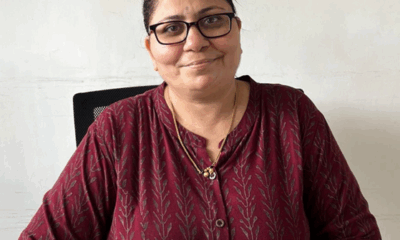
 Education3 months ago
Education3 months agoIn Every Smile, a Victory – Sandhya Ukkalkar’s Journey with Jai Vakeel’s Autism Centre
-

 Education3 months ago
Education3 months agoIndian Army to Sponsor Education of 10-Year-Old Who Aided Troops During Operation Sindoor
-
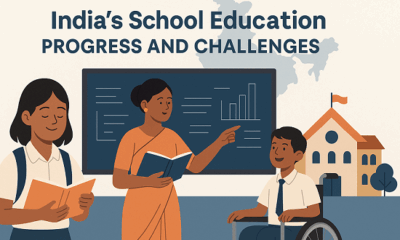
 Education2 months ago
Education2 months agoBeyond the Numbers: Reading Between the Lines of UDISE+ 2024–25
-
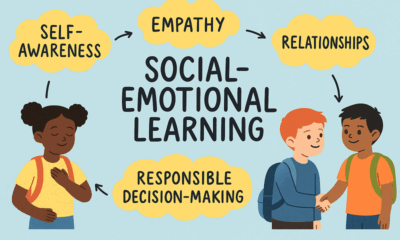
 Edutainment2 months ago
Edutainment2 months agoWeaving Social-Emotional Learning into the Curriculum
-

 Education2 months ago
Education2 months agoEducation with Purpose: Shaping Responsible Learners for a Better Tomorrow
-

 Education2 months ago
Education2 months agoEducate Girls Becomes First Indian NGO to Win the Ramon Magsaysay Award
-
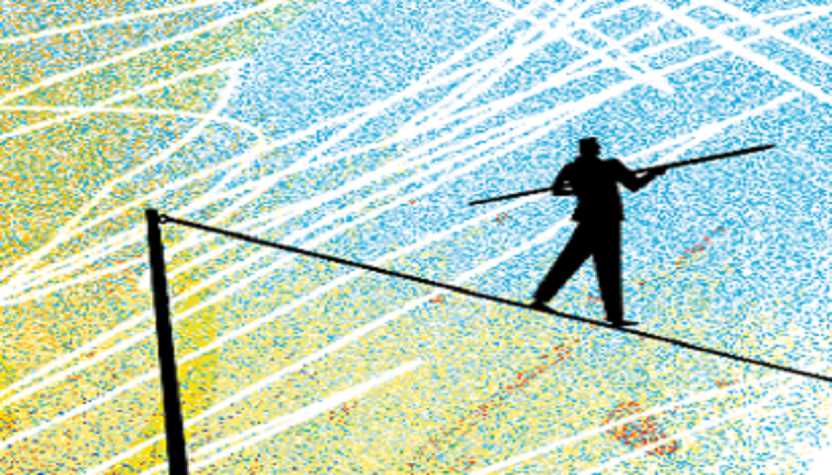
 Education3 months ago
Education3 months agoIndia Plans Unified Higher Education Regulator: What the HECI Bill Means
-
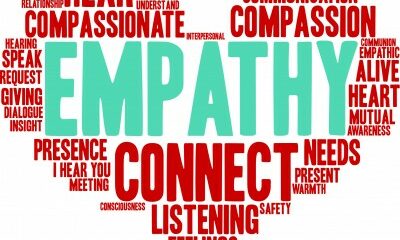
 Education2 months ago
Education2 months agoEmpathy as a 21st-Century Competency: Developing Emotional Intelligence among Students
-

 Education3 months ago
Education3 months agoMath Meets Machine: How AI Is Revolutionising Classroom Learning
-
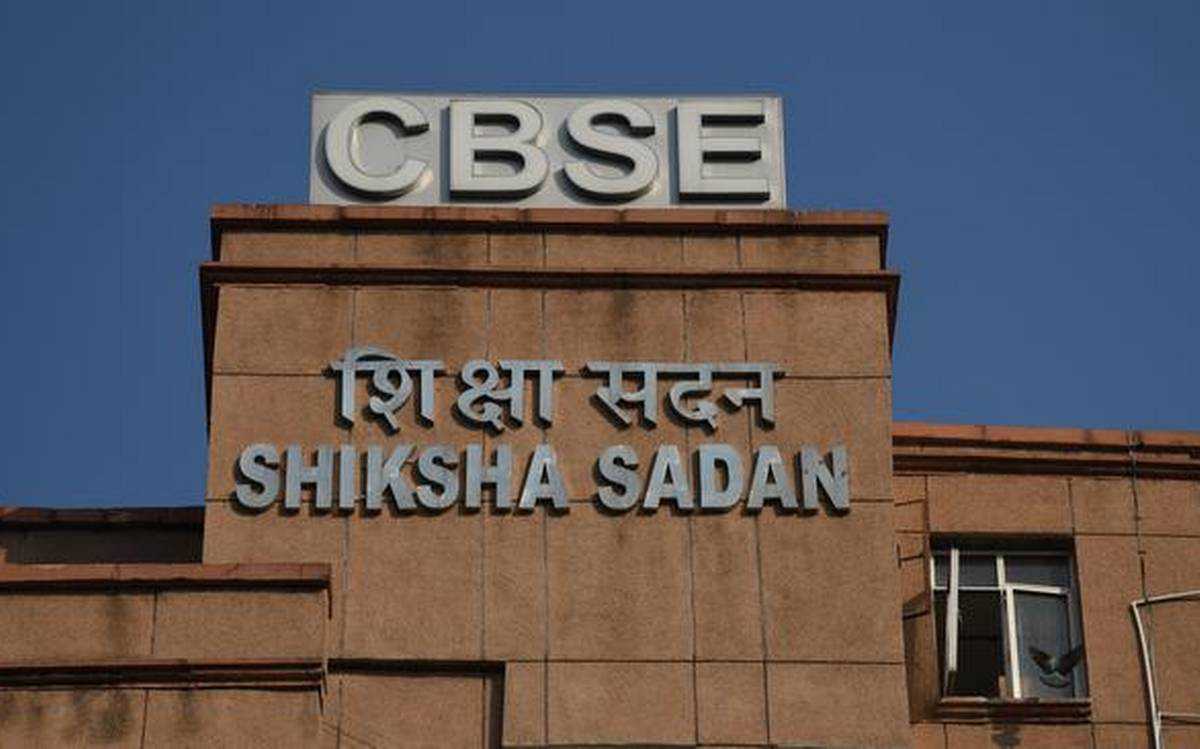
 Education3 months ago
Education3 months agoCBSE Plans Two-Level Science and Maths in Classes 11–12 to Ease Pressure and Boost Flexibility



